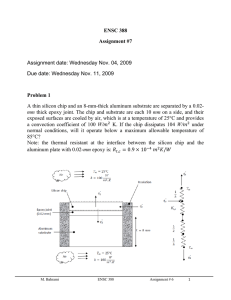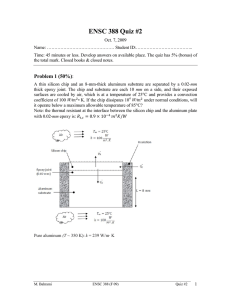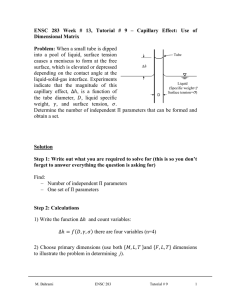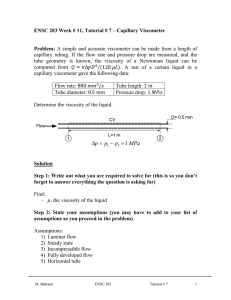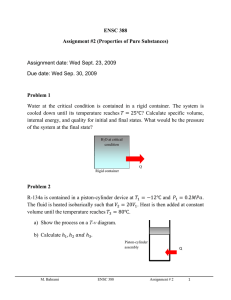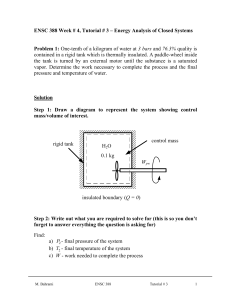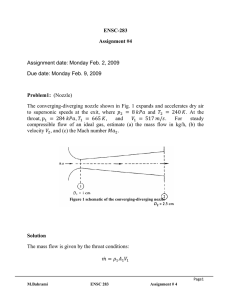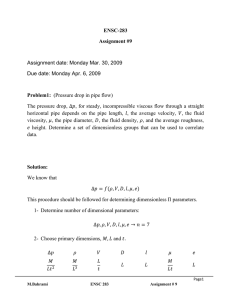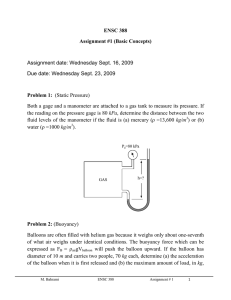ENSC 388 Assignment #7 Problem 1
advertisement
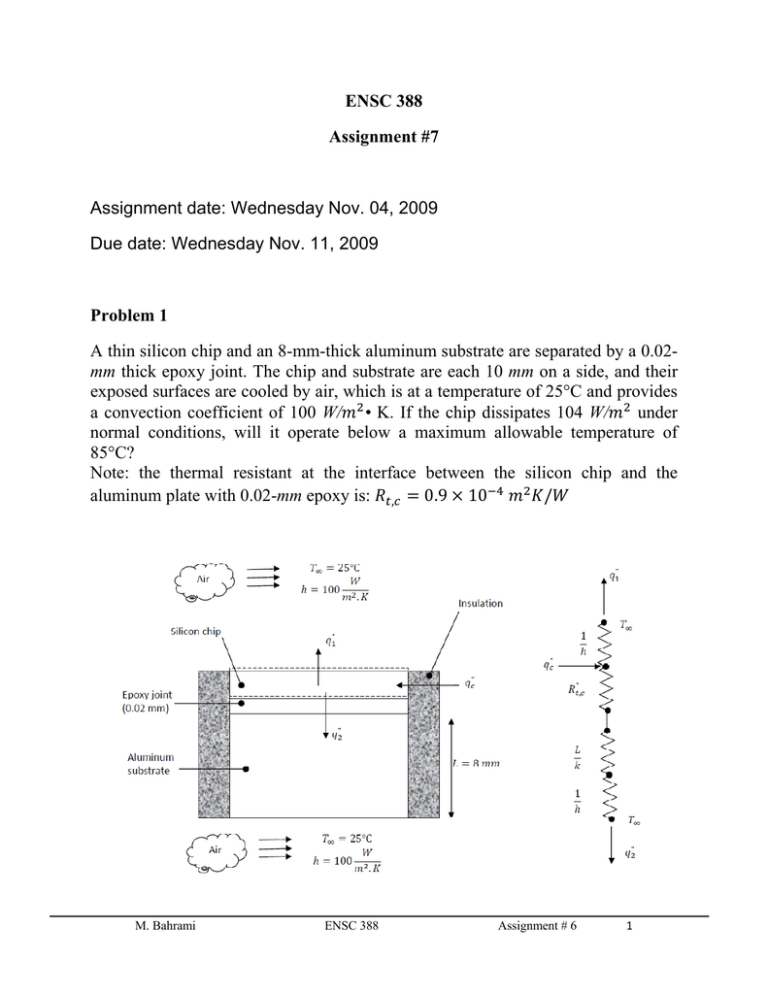
ENSC 388 Assignment #7 Assignment date: Wednesday Nov. 04, 2009 Due date: Wednesday Nov. 11, 2009 Problem 1 A thin silicon chip and an 8-mm-thick aluminum substrate are separated by a 0.02mm thick epoxy joint. The chip and substrate are each 10 mm on a side, and their exposed surfaces are cooled by air, which is at a temperature of 25°C and provides a convection coefficient of 100 W/ • K. If the chip dissipates 104 W/ under normal conditions, will it operate below a maximum allowable temperature of 85°C? Note: the thermal resistant at the interface between the silicon chip and the aluminum plate with 0.02-mm epoxy is: , 0.9 10 / M. Bahrami ENSC 388 Assignment # 6 1 Problem 2 Consider a long solid tube, insulated at the outer radius and cooled at the inner radius r), with uniform heat generation (W/ ) within the solid. 1. Obtain the general solution for the temperature distribution in the tube. 2. In a practical application a limit would be placed on the maximum temperature that is permissible at the insulated surface (r = ). Specifying this limit as , identify appropriate boundary conditions that could be used to determine the arbitrary constants appearing in the general solution. Determine these constants and the corresponding form of the temperature distribution. 3. Determine the heat removal rate per unit length of tube. 4. If the coolant is available at a temperature , obtain an expression for the convection coefficient that would have to be maintained at the inner surface to allow for operation at prescribed values of , and . Note: conduction heat transfer with generation in cylindrical coordinate is: 1 1 dT r r dr dr q k 0 , , , , Coolant , M. Bahrami ENSC 388 Assignment # 6 2 Problem 1: Known: Dimensions, heat dissipation, and maximum allowable temperature of a silicon chip. Thickness of aluminum substrate and epoxy joint. Convection conditions at exposed chip and substrate surfaces. Find: - Whether maximum allowable temperature is exceeded. Assumptions: 1. Steady-state conditions. 2. One-dimensional conduction (negligible heat transfer from sides of composite). 3. Negligible chip thermal resistance (an isothermal chip). 4. Constant properties. 5. Negligible radiation exchange with surroundings. Properties: Pure aluminum (T ~ 350 K): k = 239 W/m· K (Table A-24). Analysis: Heat dissipated in the chip is transferred to the air directly from the exposed surface and indirectly through the joint and substrate. Performing an energy balance on a control surface about the chip, it follows that, on the basis of a unit surface area, " " " Or " / " , / / To conservatively estimate Tc , the maximum possible value of " , 0.9 10 M. Bahrami ENSC 388 Assignment # 6 3 m2 • K/W is obtained from Table. Hence 1 " " / , 1/ Or 25 10 1 100 0.9 25 0.34 50.3 100 10 . / 75.3 Hence the chip will operate below its maximum allowable temperature. Problem 2: Known: Solid tube with uniform heat generation IS insulated at the outer surface and cooled at the inner surface. Find: 1. General solution for the temperature distribution T(r). 2. Appropriate boundary conditions and the corresponding form of the temperature distribution. 3. Heat removal rate for specified maximum temperature. 4. Corresponding required convection coefficient at the inner surface. Assumptions: 1. Steady-state conditions. 2. One-dimensional radial conduction. 3. Constant properties. 4. Uniform volumetric heat generation. M. Bahrami ENSC 388 Assignment # 6 4 5. Outer surface adiabatic. Analysis: To determine T(r), the appropriate form of the heat equation, the equation of heat transfer in cylindrical coordinate must be solved. For the prescribed conditions, this expression reduces to equation: 1 1 (1) 0 and the general solution is given by: (2) ln 4 Hence, this solution applies in a cylindrical shell, as well as in a solid cylinder. and , and in this problem it Two boundary conditions are needed to evaluate is appropriate to specify both conditions at . Invoking the prescribed temperature limit, (3) , and applying Fourier's law, at the adiabatic outer surface (4) 0 Using Equations (2) and (3), it follows that (5) ln , 4 Similarly, from Equations (4) and (1): (6) 0 2 Hence (7) 2 and from Equation (3) , 4 2 ln (8) M. Bahrami ENSC 388 Assignment # 6 5 Substituting Equations (7) and (8) into the general solution, Equation (2), it follows that (9) ln , 4 2 The heat removal rate may be determined by obtaining the conduction rate at by evaluating the total generation rate for the tube. From Fourier's law or (10) 2 Hence, substituting from Equation (9) and evaluating the result at , (11) 2 2 2 Alternatively, because the tube is insulated at the rate at which heat is generated in the tube must equal the rate of removal at . That is, for a control volume about 0, where the tube, the energy conservation requirement, reduces to . Hence and (13) Applying the energy conservation requirement, to the inner surface, it follows that , (14) Or 2 (15) , Hence (16) 2 where , , may be obtained by evaluating Equation (10) at r = . M. Bahrami ENSC 388 Assignment # 6 6
